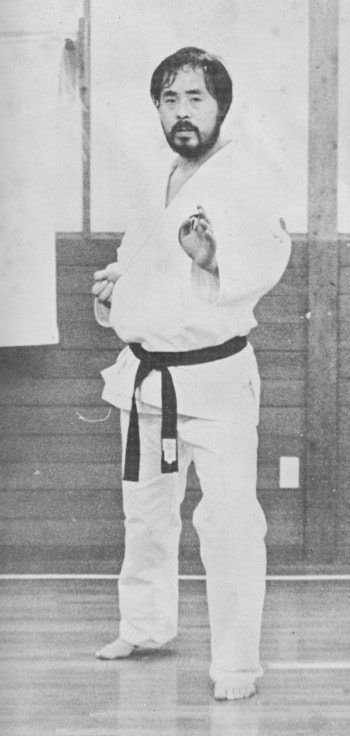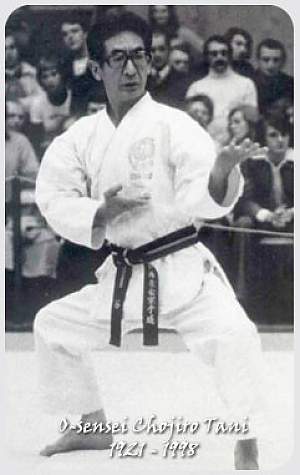History of Shukokai Ryu

The World Budo Alliance is proud to present the History of Shukokai Ryu as part of the preservation of Martial Art History Project. Firstly, this Karate style is a mix of Shito-ryu and Goju-ryu. And it maintains a balance of about 60% hard techniques with 40% soft ones. Thus practitioners always use natural stances and there are 44 kata for students to learn.
History of Shukokai Ryu
Most of all being a direct descendant of Shito-Ryu, Shukokai inherits the characteristics of both the Naha-te and Shuri-te styles of Okinawan Karate. Thus Kenwa Mabuni merged the techniques and principles of the styles he learned from his teachers Kanryu Higaonna. And also Anko Itosu to form his Shito-Ryu style of Karate. As such, Shukokai combines the circular breathing techniques from Naha-te. Also the quick linear movements of the Shuri-te styles. This is apparent in the kata performed within Shukokai.
Therefore Kata's like Sanchin, Tensho, and Seienchin are handed down from the Naha-te traditions. While kata's like Annanko, Matsukaze, and Bassai-Dai are handed down from the Shuri-te traditions. Upon close examination, one can see the similarities between Tensho, Sanchin, and Seienchin. And also the similarities between Bassai-Dai, Annanko, and Matsukaze. Also what makes the Naha-te katas different from the Shuri-te katas.
Most importantly Master Mabuni's experience with both the Naha-te and Shuri -te styles was why he was renowned throughout Japan and Okinawa. And considered as the foremost expert on kata. Another attribute that distinguishes Shukokai Karate from other styles is the execution of techniques. While Shukokai shares many of the same punches, kicks, and blocks found in other popular styles of Karate. And it is in how these are executed that sets Shukokai apart
History of Shukokai Ryu
Therefore Sensei Tani began studying Goju Karate while at Junior High school. And when he entered the Doshisha University, he began studying Shito Ryu Karate. Most of all upon receiving his Menko (Teachers Certificate) from Kenwa Mabuni, Sensei Tani began teaching Tani-Ha Shito Ryu at his own Dojo in 1948. He proudly hung a wood carved sign above the entrance which said Shukokai.
Therefore Sensei Tani sought to perfect his style by studying the mechanics of the human body. And developed techniques which can be delivered with maximum efficiency. Over a long period of time Sensei Tani evolved and developed Shukokai. He always laid stress on the importance of etiquette, discipline and mental control. And was at pains constantly to promote the improvement of technique.
When Sensei Tani retired as Chief Technical Director he appointed Shigeru Kimura (9th Dan) as his successor. Sensei Kimura had won the World All-Styles Championship when only 21 years of age. And had twice been the All-Japan champion before retiring from active competition.
Master Kimura and Master Tani

Sensei Tani and Sensei Kimura made their greatest contributions to the style by continually refining each technique to the highest degree.
And essentially re-defining the basics that had been practiced for centuries. Both made the study of body mechanics their primary focus with the end result being the delivery of the greatest impact with the least amount of effort.
Another defining characteristic is that each technique must be combat-effective. Sensei Kimura believed that a technique, no matter how powerful, was useless if it could not be delivered under combat situations. Therefore his philosophy was that the outcome of a confrontation should be decided in a single technique.Thus as per the way of the samurais of old. This drove him to continually modify and test his technique throughout the course of his life. And with the end result being the traditional, yet combat-effective style of Karate we call Shukokai.
And every technique executed within Shukokai has these defining principles at their very core.
History of Shukokai Ryu
Most importantly this karate school was founded by TANI Chojiro Sensei, born on January 25, 1921 in Kobe, Japan. His teachers were MIYAGI Chojun Sensei – founder of Goju-Ryu Karatedo and Mabuni Kenwa Sensei – founder of Shito-Ryu Karatedo.
Most of all is that Tani Sensei studied at the Doshisha University in Kyoto. And this was from where he also graduated. And in 1948 he opened his school “Research Institute for Tani Karatedo” and named it SHUKOKAI and TANI-HA SHITO-RYU KARATE DO respectively.
Shukokai means “association for common practice”, a name that was chosen for political reasons. And at that time, after the defeat in World War II, the practice of martial arts was forbidden in Japan. Under this name, however, one could train undisturbed.
While this history is somewhat brief it still has great value.
Researched by Sense Kara Borshuk
Edited by Grand Master Art Mason